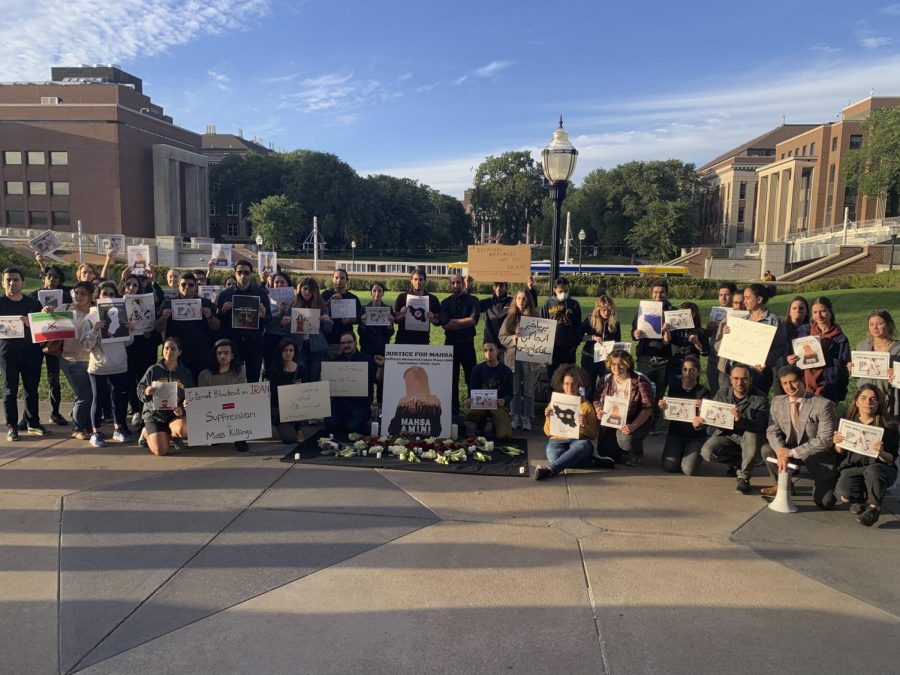Oil field fires set by retreating Iraqi troops will not significantly affect the U.S. gas supply, according to U.S. energy consortiums.
Domestic fuel supplies will continue uninterrupted despite the ongoing U.S.-led military action in the Persian Gulf, according to a joint statement released by the American Petroleum Institute and the American Automobile Association on Thursday. However, they acknowledge such speculation assumes a quick, decisive victory with a relatively small amount of fires to put out.
Seven large oil fires were discovered in southern Iraq by coalition forces Friday, according to wire reports.
“While a conflict with Iraq could interrupt some crude oil supplies, potentially lifting oil prices worldwide, higher prices could, in turn, spur increased crude oil production from nations who may have unused or surplus production capacity,” the report said. “Nations with strategic oil reserves could replace some lost supplies by releasing crude oil from their strategic reserves. Ö Replacing lost supplies would tend to moderate price volatility.”
Sixty percent of all oil consumed in 2002 was imported, according to U.S. Department of Energy statistics. Iraq was the source of 2.2 percent (450,000 barrels a day) and 7.9 percent came from Saudi Arabia. During the Gulf War, Saudi Arabia increased its production significantly to compensate for the loss of Kuwaiti contributions.
In case of emergencies, the U.S. Strategic Petroleum Reserve holds 600 million barrels of crude oil in an undisclosed location. The reserve was created after the 1970s oil embargo. During the Iraqi invasion of Kuwait in 1991, crude oil barrel prices more than doubled. Under federal law, the reserve oil can enter the market 15 days after the president approves its use.
“It is impossible to know the effect of a conflict with Iraq on crude oil prices,” the report said.
Organizations of Petroleum Exporting Countries have publicly indicated they will fill any supply shortfall that might occur. More than 11 percent of all U.S. oil consumption is imported from the Persian Gulf region.
Iraq supplies 1.5 million barrels per day to the world market. That translates to less than 2 percent of the earth’s supplies, far less than the required 7 percent necessary to deem it a “strategic supply” by the International Energy Agency. The agency maintains a protective stockpile of four billion barrels.
A full U.S. military escort protected Kuwaiti tankers in 1991 and during the Iran-Iraq war between 1980 and 1988.
The George W. Bush administration has said repeatedly that after a coalition victory, Iraq’s oil fields would only be used to pay the country’s reconstruction costs following the departure of Saddam Hussein’s government. The U.N.s’ plan to supervise a new version of the oil-for-food program it maintains would only benefit the Iraqi people.
Iraq has the second largest proven oil supply in the world, with 112.5 billion barrels altogether. As of Friday afternoon, Kuwait was considering slashing production by 700,000 barrels per day near the Iraqi border. The United States uses about 20 million barrels a day, 37 percent of the world’s consumption.
No gas panic
There were no significant instances of local gas hoarding or price gouging in the days following the initial bombing raids, a sharp contrast to the long lines and high prices that accompanied the Sept. 11 terror attacks and the start of the 1991 gulf war.
Both the Federal Trade Commission and state law prohibit gas price gouging, and intense scrutiny by both the media and consumer groups verified that gas stations did not engage in any illegal pricing activities.
Oil prices today are half what they were during the 1970s, when they were heavily inflated. Conversely, a barrel today costs $36 compared to $18 a year ago. Strict price controls under the Carter administration led to mile-long lines, heavy rationing and subdued investment in the oil industry, according to the American Petroleum Institute.
Since last November, gasoline prices have increased 29 cents per gallon.
Environmental impact
Wild Well Control, a Texas-based company, was among the specially trained “oil capper” firefighters responsible for putting out the more than 700 Kuwaiti wellheads set ablaze by the retreating Iraqi military in the gulf war. The extinguishing operation took over nine months to complete, and enormous clouds of smoke were visible from U.S. satellite images.
On many occasions, Hussein has threatened to sabotage his country’s oil supply by dumping it into the water supply. Downtown Baghdad is currently surrounded on all sides by an oil-saturated moat that was set ablaze Saturday to temporarily slow advancing coalition air forces.
During the first gulf war, Iraq intentionally released more than 11 million barrels into the Arabian Gulf. The spill stretched over 800 miles and was 20 times larger than the 1989’s Exxon Valdez disaster. The cleanup costs totaled more than $700 million.
The full extent of the biological damage caused by the 1991 fires is still not known, as environmental groups or agencies have never been granted adequate security clearance to produce a complete report.
Arctic drilling nixed
The U.S. Senate defeated the latest proposal to drill in the Arctic National Wildlife Refuge by a vote of 52-48 on Wednesday. Minnesota Sen. Norm Coleman kept his campaign promise and voted against the resolution, despite heavy oil industry lobbying.
Alaska currently provides 17 percent, or 1 million barrels per day, of U.S. oil production. A maximum of 16 billion barrels of oil are estimated to reside under Prudhoe Bay, Alaska, also part of the wildlife refuge.
Environmental groups like the nonprofit Alaska Coalition of Minnesota applauded the vote. The refuge is home to endangered and threatened species such as caribou, polar bears, grizzly bears, musk oxen and dozens of indigenous bird species unique to the region, according to the coalition.
The Associated Press
contributed to this report.
Nathan Hall covers transportation and the environment and welcomes comments at nhall@mndaily.com







